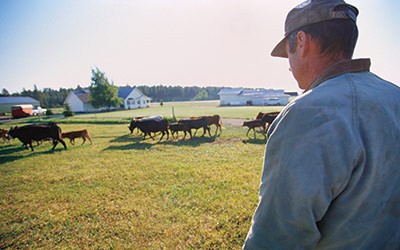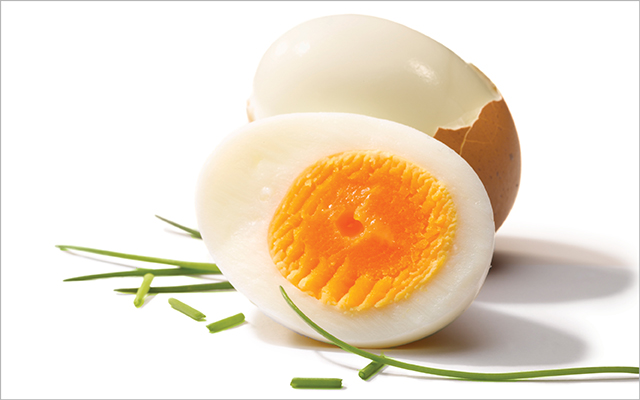I love a good cookbook, and one of the perks of my job is that I receive new cookbooks for review almost every day (sometimes several at a time). Some strike me as truly essential, and I drop everything to read them. Others strike me as rather odd and unnecessary: A whole cookbook dedicated to dishes made of dehydrated food and stored in vacuum-sealed bags? I sniff. Really?
It seems that whenever a new ingredient or piece of cooking gear becomes popular, it spontaneously generates a hundred new cookbooks, like a potato in a bin sprouting white shoots. Many of these books aspire to change the world with their on-trend perspectives.
When Inspiralize Everything: An Apples-to-Zucchini Encyclopedia of Spiralizing crossed my desk, I could just picture a Leave It to Beaver–style dad in his business suit and wingtips opening the front door and calling “Honey, I’m home!” only to find his spouse surrounded by piles of spiraled peppers, spiraled sweet potatoes, and spiraled carrots. “Oh no, you inspiralized everything!” he cries, gathering his exhausted partner into his arms.
Then there are some cookbooks I await with eager anticipation, such as the forthcoming book from Christopher Kimball, whose website succinctly pinpoints his place in the culinary universe: “You know me — I’m the guy with the bow tie.” Kimball is a classic, a lifer. He even cooked with Julia Child.
If you don’t know him, you’re probably familiar with at least some of his work. He was a founder of America’s Test Kitchen: the superpower that produces television shows, cookbooks, and cooking magazines.
Kimball has since moved on to create Milk Street, which is also a multimedia enterprise, including a television show, cookbooks, a cooking magazine, a radio show, and a subscription-only website. His soon-to-be-released book is Milk Street Tuesday Nights: More Than 200 Simple Weeknight Suppers That Deliver Bold Flavor, Fast.
I called up Kimball to find out how he continues to offer fresh solutions to one of the oldest of human conundrums — getting dinner on the table — after all these years. His latest inspiration, he said, comes from the home cooks he’s met on his recent international travels.
Cosmopolitan Cuisine
“If you look around the world, everyone’s putting dinner on the table, but they have different solutions — and sometimes better solutions — to that problem, and we can learn from them,” Kimball said.
Classic American cuisine often relies on a few staple seasonings — salt, pepper, onion, garlic. But in a country where our ancestors hail from all over the planet, Kimball sees no reason to limit our options.
“It’s not about the cooking; it’s about the flavors,” he explained. “Stir-fried rice takes about eight minutes — but add ingredients like ginger, fresh herbs, and fermented sauces, such as soy sauce and fish sauce, and you can get really big flavor.”
Roast chicken pieces? “If you’re thinking Palestinian, you can make that chicken with 2 tablespoons of sumac and a handful of herbs, and you’re not doing a lot more work, but you’re getting a lot more flavor.”
I didn’t ask Kimball his opinion of spiralized zucchini, but I did wonder what he thinks of the various food trends that come and go in this country, including waves of popular “ethnic” cuisines.
“We don’t have trends the way we once did,” he replied, referring to singular phenomena like kale and kiwi that suddenly “arrived” and then turned into mainstays after a few years. “It’s not one or two things coming in; it’s everything coming in — food without borders. We’re having a national conversation about immigration when it comes to people, but no one’s stopping the food.”
He added that he can’t stand the term “ethnic cooking.”
“That’s never what we’re doing,” he said. “We’re not making a faithful reproduction of food as it’s served in Goa. What we’re doing is asking: ‘What is a curry? What have we learned in the markets and from cooks in Goa? What lessons can we take and use to cook at home?’ That’s what’s helpful.”
So it’s not a question of whether we’re into Thai food this year. “All the ingredients are right here,” Kimball explained. “We all have so many choices. It used to be you’d go into the grocery store and your options would be pork chops, ground beef, chicken quarters, a few other things. Now it’s not five things, or 10; it’s a hundred.”
And while the core American farmhouse dishes, such as pork chops and biscuits, are not going away, the days of assuming they’re for everyone are over. “It’s like fashion. People dress differently,” Kimball said. “In the future, it’s not that there won’t be American cooking; it will just be that everyone does their own thing.”
A Commitment to Learning
Since I had him on the phone, I had to ask Kimball what Julia Child would’ve thought of our brave new world of Goan chicken on Mondays and Tokyo tofu on Tuesdays.
“I never thought I’d have to speak for the ghost of Julia Child,” he laughed. “She was very happy cooking the food of Paris in the 1950s, when her palate was awakened. She was perfectly happy to go to the Nice airport and get a sole meunière and a glass of Sancerre. She wasn’t looking for new and different; a crème caramel was perfectly good, thank you very much. But Julia was a very curious person. While she wasn’t looking for the next big thing, she was always learning.”
A commitment to learning is what landed Kimball and his team on the ground in countries around the globe, inventing recipes for busy Americans who want something new, all the time. “We got plane tickets, cooked with people, came home, cooked, modified, adapted. A lot of work goes into every recipe.”
And that, my friends, is how you build a recipe-driven empire and make books even sniffy, jaded cookbook skeptics really, really want.
This originally appeared as “The New American Classic” in the October 2018 issue of Experience Life.




This Post Has 0 Comments